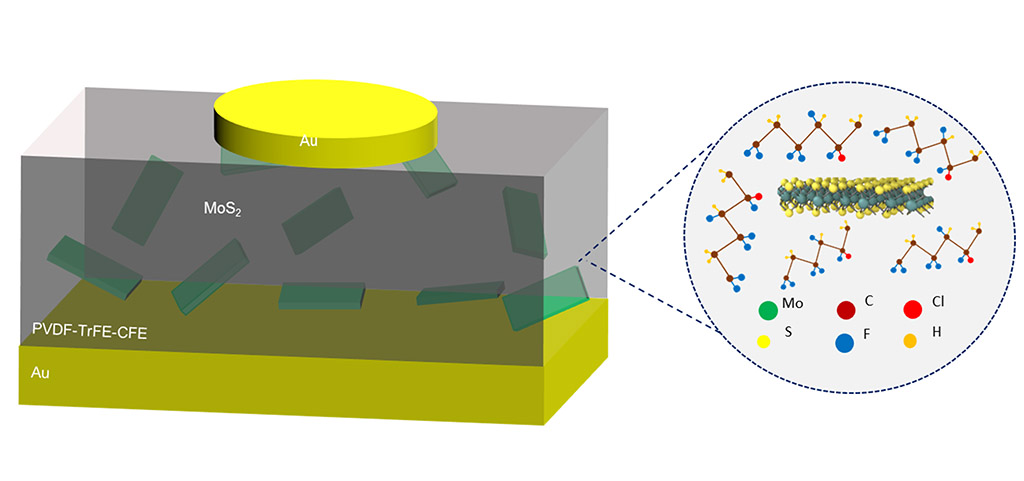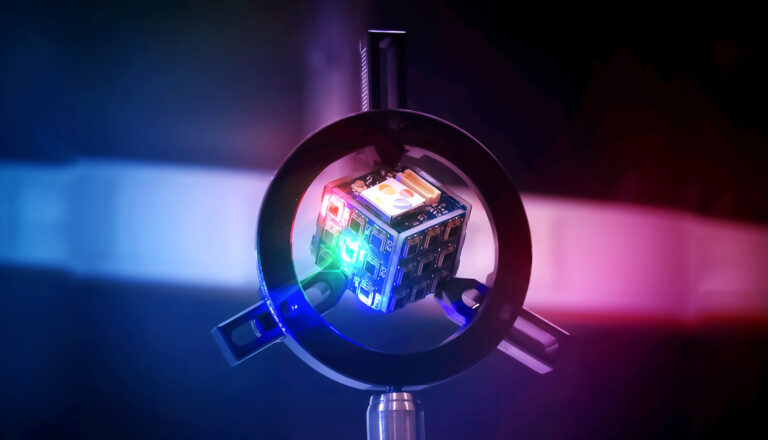Electrical Engineering
A broader bandwidth for electrical devices
Combining a polymer and microparticles enables a new type of capacitor that could mimic the way the brain processes information.

A simple fractional-order capacitor has been developed by a team from KAUST. Made from a single component, this device expands the range of frequencies that can be achieved by these devices, making them better at energy storage.
Traditional analogue components are resistors, capacitors and inductors. More recently, fractional-order components have gained attention due to their unconventional properties that enable increased flexibility. For example, fractional-order capacitors can temporarily store the signal in a manner that is similar to the behavior of neurons, thus imitating the information processing ability of the human brain. Their uses for electrical devices include filters, to neural circuits, supercapacitors and batteries.
“Conventional capacitors change the phase angle of sinusoidal electrical signals by -90 degrees only,” explains Agamyrat Agambayev, a researcher in KAUST’s Advanced Membranes and Porous Materials Center. “Fractional order-capacitors change the phase angle to any desired value between 0 and -90 degrees.”

A single-component fractional-order capacitor made using a molybdenum-disulfide polymer composite operates over a much broader range of frequencies than those fabricated previously.
Reproduced with permission from reference 1 © 2018 AIP
A fractional-order capacitor can be constructed by combining traditional components into a single device, but this requires a large number of resistors and capacitors, which makes them complicated, heavy and expensive. Instead, Agambayev and colleagues have created a fractional-order capacitor from just a single component.
The team made their component by mixing a solution containing micrometer-scale particles of molybdenum disulfide with a polymer solution. Droplets of this solution, once thoroughly mixed, were placed on a silicon substrate and left to dry. The fractional-order capacitor was finished by attaching gold electrical contacts.
The new device was able to shift the phase, or delay, of an incoming signal. The size of this shift could be varied between -80 degrees and -58 degrees by changing the polymer used in the composite and the amount of molybdenum disulfide.
A key requirement of any device is to operate over as broad a range of frequencies as possible. The device created by Agambayev and the team worked at frequencies between 100 Hertz and 10 Mega Hertz. This five-decade range surpasses the three-decade bandwidth achieved in previous fractional-order capacitors.
“Next, we will work on extending the bandwidth of such capacitors toward even higher frequencies and design robust electronic systems that incorporate our fractional-order capacitors,” says Agambayev.
References
-
Agambayev, A., Farhat, M., Patole, S.P., Hassan, A.H., Bagci, H. & Salama, K.N. An ultra-broadband single-component fractional-order capacitor using MoS2-ferroelectric polymer composite. Applied Physics Letters 113, 093505 (2018).| article
You might also like

Bioengineering
Sensing stress to keep plants safe

Computer Science
Sweat-sniffing sensor could make workouts smarter

Electrical Engineering
New tech detects dehydration by touching a screen

Electrical Engineering
A new interface for efficient electronics

Electrical Engineering
Artificial neurons enable neuromorphic computing with light

Electrical Engineering
Narrow-linewidth lasers bring low-noise answer

Electrical Engineering
Octopus suckers inspire sticky medical patch

Electrical Engineering




